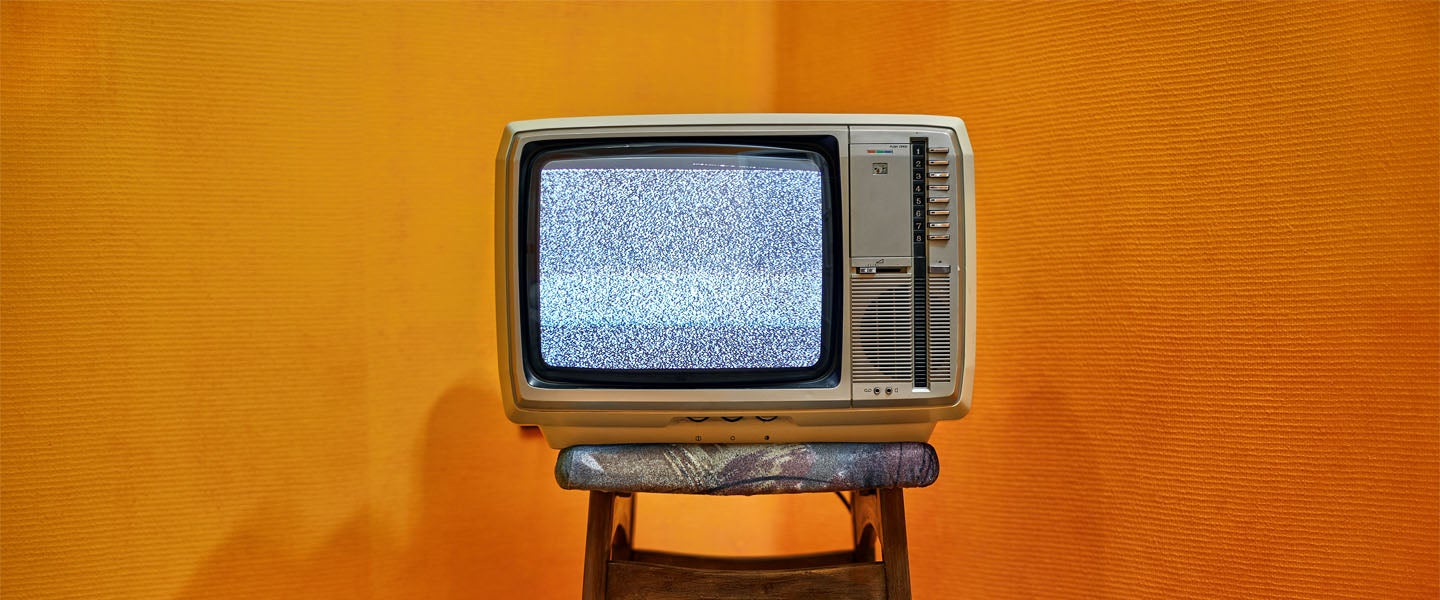How do you pick the right TV size for the NFL season opener? If you’re like me, you start with calling your mom.
The Chicago Bears host the Green Bay Packers tonight in the NFL’s 100th-season opener. As a two-decade season-ticket holder, my dad is taking my entire family — except for me — to the Bears game tonight. This means from here until February, the family group chats will now solely consist of texts about players I don’t know and random lines like “They’re down 20-27” and “We’re up 17-15.” They don’t like when I respond with references to Ryan Murphy’s show 9-1-1.
To satisfy my family — but mostly because I need to furnish a new apartment — it’s time I buy myself a TV. I need to consider the size of my apartment (small), how much space it’ll occupy in my living room (a lot), the brightness of the room (a sunny single window) and how close I want to sit (I literally want to live inside my TV).
So I talked to some experts. Paul, a representative for independent Brooklyn tech shop Lucas Electronics, tells me choosing the right TV today is a lot like buying a car. “If you just want to drive on Sundays to the church or the temple, you don’t buy the most expensive car,” he says. “The same with a TV. If you’re using it just for news three hours a week, you don’t want to spend $2,000. You want to spend $500.” After watching the trailer for HBO’s upcoming miniseries The New Pope, though, I’m willing to drop $2,000 to see Jude Law in a papal Speedo.
The Best TV for Football in 2019: 4K vs. UHD
For sports fans preferring their buff men clothed when tackling each other (couldn’t be me), the choice is simpler: You should prioritize 4K Ultra High Definition. Paul says almost all new TVs sold today are 4K, a reference to the number of pixels on the screen at once creating crisp, detailed images. The higher the number of Ks, the fewer grid-like pixels you see. Ultra high-definition, while not quite interchangeable with the term 4K, is commonly used by TV brands to represent the same high-quality concept for customers. That’s why you’ll see 4K UHD TVs at Best Buy.
“TVs with 4K UHD are the most optimal for game-day viewing,” says Derek Meister, an agent for Best Buy’s Geek Squad. “Not only is 4K UHD four times sharper than HDTV, but they’ve also become more affordable than ever.”
What About QLED vs. OLED for Sports?
But if you’re like me and you care less about Green Bay Packers quarterback Aaron Rodgers and more about rewatching his ex-girlfriend Olivia Munn’s stunning character work as “Olivia Munn” in Ocean’s Eight, then you’ll want to go with an OLED TV.
“For movies, you go with the LG OLED,” Paul says. QLED is transmissive, meaning pixels rely on an LED backlight to showcase color. In a bright room, OLED TVs are bad because the brightness won’t produce as vivid a picture. The pixels will be washed-out and less colorful.
A QLED TV, on the other hand, is better for routine daytime viewing. “For games, 100 percent, I’ll tell customers to go with the Samsung QLED,” Paul says. With QLED, you’re choosing brightness over the vibrancy of the colors.
Consider Size vs. Space in Your Living Room
After you’ve decided on the quality of the TV, you’ll need to focus on size. To find the TV appropriate for your room, you need to do a little math. Ugh!
As a general rule, the minimum distance between your TV and couch should be 1.5 times the size of your screen. If your TV is 60 inches, then you’ll need to be 90 inches away, or 7.5 feet. For the maximum distance, double the size of your screen. For a 60-inch TV, you’ll want to be sitting 10 feet away, max, on your L-shaped sectional.
Of course, these rules are arbitrary. “Too big of a TV can be a little overwhelming in a small space; optimal size is based on the setup of your space and where you’re watching from,” Meister says. If you live in a shoebox apartment like me, you might not have the space for a 60-inch TV. But that just means you’ll save money. For what it’s worth, the Wirecutter pick for a budget 4K TV will run you about $370 for the 55-inch right now.
Mounted vs. Standing TVs
The last thing to consider is where to place your TV. Mount it above your fireplace? Buy an expensive wooden TV console? Place it on a flimsy IKEA coffee table you copped off the street?
Charles Marshall, design director for Manhattan design consultancy Parc Office, told the Wall Street Journal it all comes down to convenience. “A TV on a stand allows flexibility and a place to hide cables,” Marshall says. Opting out of a pricey TV mount might mean you can afford the new Disney+ and Apple TV+ streaming services instead. However, if you want to go for pure aesthetic, literally nothing looks more swanky than a TV mounted above a fireplace with chromatic art projected.
Sound Advice for Your Tinny Built-In Speakers
Before you leave the store, though, don’t forget about the sound quality. Meister says it’s worth investing in a soundbar, as the new wave of super-thin TVs leave little room for quality speakers. Soundbars are all-in-one speakers to place on your TV stand without the wires or the cost of a surround-sound system.
“You want to make sure you can enjoy the sights and the sounds of the game,” Meister says. No matter how large and high-quality your TV is, it won’t help you hear the grunts of two buff linemen bashing up against each other.
Go With Your Mom’s Pick
When all else fails, text your mom while she’s inside Soldier Field waiting for the game to start and ask, “What TV should I buy to watch sports?” With an assist from my brother, who recommends an LG or Sony TV, my mom’s advice is this: “Big screen and high definition. As big as you can afford.” Or you can do as my college roommates did and buy a fucking projector to stream that sports shit.

